
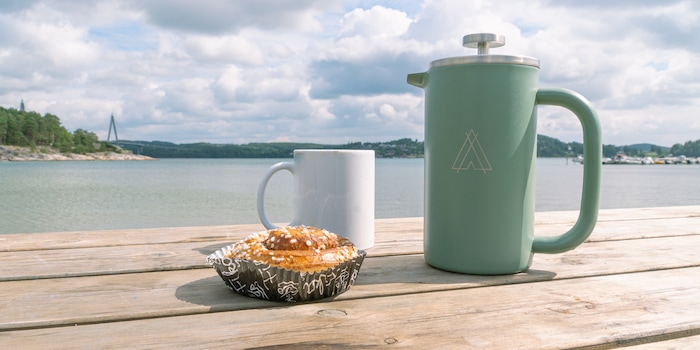
How I went from being a Bialetti swirler to a French press pusher
For many years, I got my morning caffeine hit from an old Baletti coffee pot. That was before a three-week camping trip in Sweden converted me to French pressing. Allow me to explain how.
Every morning starts with a coffee – in my world, anyway. Every morning. And when it doesn’t? Well, on those days, you won’t want anything to do with me. Naturally, I enjoy high-quality cups of coffee – espresso or cappuccino. At home, we have a fully automatic machine made by a suitably well-known Swiss company to do the job. It’s helped along by a milk foamer made by another suitably well-known Swiss company. On family vacations in recent years, which we’ve mostly spent in holiday homes, our rather ancient Bialetti stepped up to take on the task. Incidentally, we’d always used the Bialetti at home before we bought our fully automatic machine.
This summer, the Italian moka pot served as a holiday companion on our three-week campervan trip in southern Sweden. But only as a back-up. Taking on the morning coffee job this time was, in fact, a French press coffee machine from Campo Libre.

The pot holds about six decilitres of liquid and is double-walled. This is meant to keep fresh coffee hot for a long time. The principle is really simple. You spoon ground coffee into the pot, pour hot water over it, pop the lid-sieve on top and press the water through the sieve, pushing the coffee down to the bottom of the pot. And hey presto.
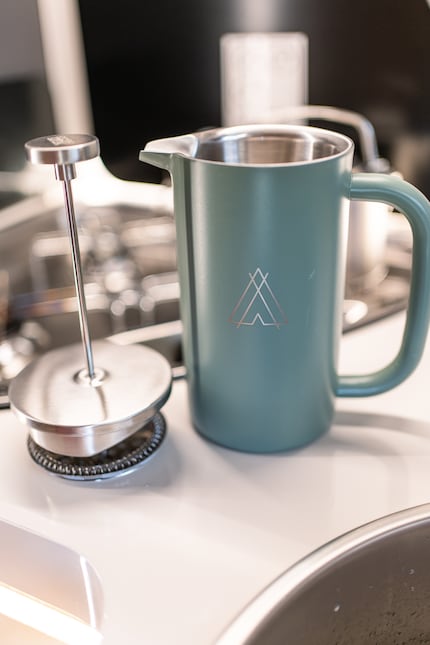
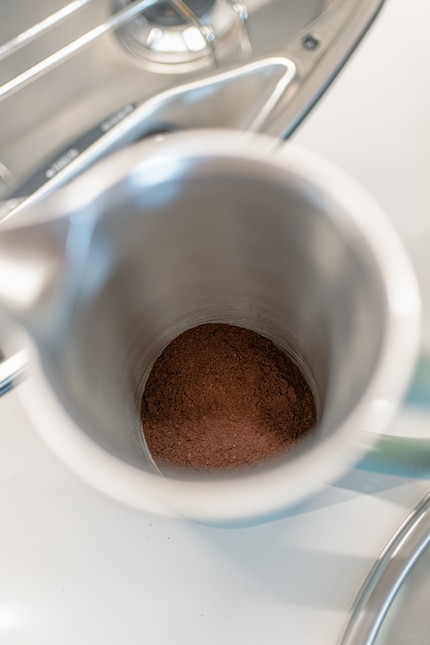
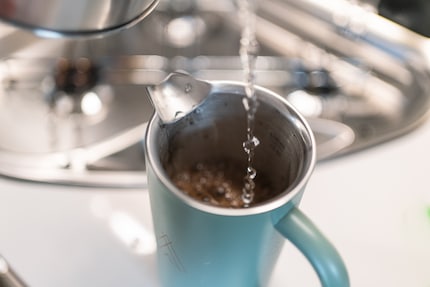
For the first two or three days, however, we stuck to making coffee in the Bialetti. It was better to be safe than sorry. After all, those days involved long stretches of driving on the road between Switzerland and Sweden, so I didn’t fancy taking any risks. Braving German motorways without a decent hit of caffeine? No thanks!
One Italian replaces the other
Once we reached Sweden, we switched to the «Café Giorgio» – and it immediately took us by surprise. In a positive way, that is. After all, the first cups of coffee from the «Giorgio» presented a notable contrast to our previous cups from the Bialetti. They were more rounded, less bitter and had a more intense flavour. In short: they were better. It can’t have been down to the water, which came out of a plastic bottle. Nor can it have been the (identical) coffee powder.
In fact, it’s most likely because the Bialetti and the French press work in different ways. Whereas the former presses boiling water at roughly 100 degrees Celsius through the coffee powder, the latter involves pouring boiled water over the grounds. The coffee then sinks down through the (slowly cooling) water. This way, fewer bitter substances dissolve into the liquid, making the French press coffee more palatable.
Now, although I’m a voracious coffee drinker, I’m not all that savvy (or interested) in making it. I didn’t realise that it was better to use coffee grounds of different strengths for the Bialetti and the French press until Galaxus coffee aficionado numero uno Simon Balissat explained it to me. Equally, I should’ve left the French press coffee to brew for seven to eight minutes. I reckon I usually waited for about four to six minutes. Though, sometimes I pressed the coffee practically immediately after adding the water. In doing so, I occasionally pressed too hard or too fast, causing water and coffee powder to splash out of the pot. Like I said, I’m not the savviest of baristas – which makes me an even more impatient one.
Enzo goes perfectly with Giorgio
What I also really liked about the Giorgio compared to the Bialetti is its larger volume. Two of us got two generous cups out of it every morning, while our little Bialetti (there are, of course, larger models available) only gave us one each. What’s more, the thermos flask effect was more than up for the task of keeping the coffee hot throughout an extended breakfast. It stayed sufficiently hot for as long as 45-60 minutes after preparation.
The pot’s only tiny snag in comparison to the Bialetti is that it doesn’t heat the coffee. In other words, I had to use a separate container to boil the water for every coffee. In this regard, the «Enzo» camping cooker set – also a Campo Libre product – did invaluable work. That’s because the set includes a pot that we didn’t actually want to take (link in German).
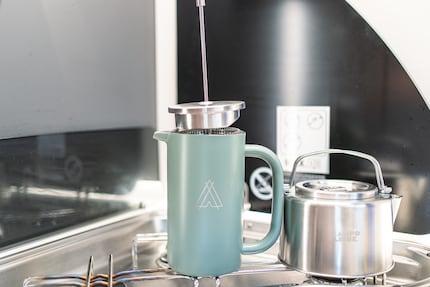
After three weeks of Giorgio coffee, the verdict is clear. Regardless of whether we’re camping or staying in a holiday home, we’ll be bringing the Giorgio on all of our future vacations – and sending the Bialetti into retirement.
Globetrotter, hiker, wok world champion (not in the ice channel), word acrobat and photo enthusiast.


